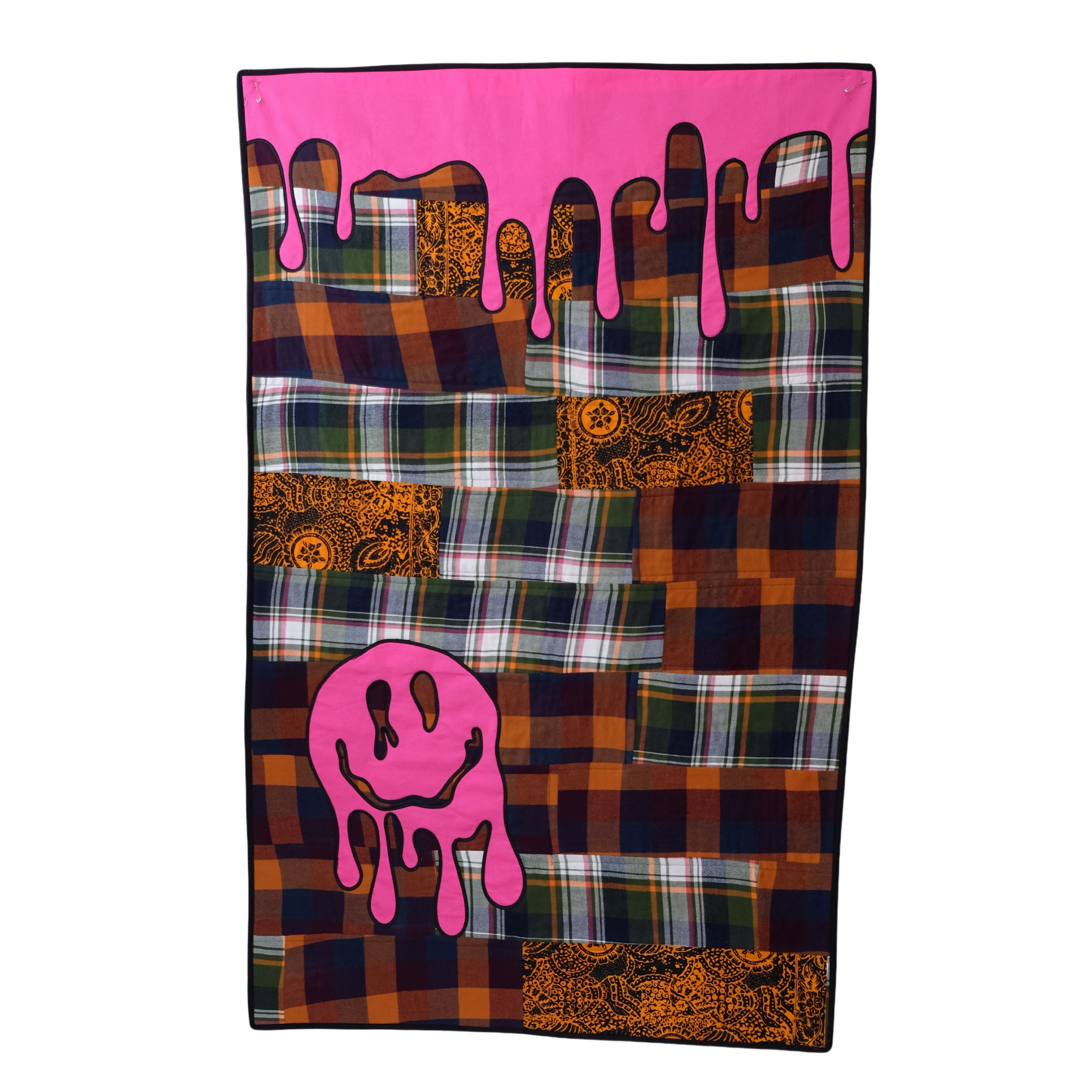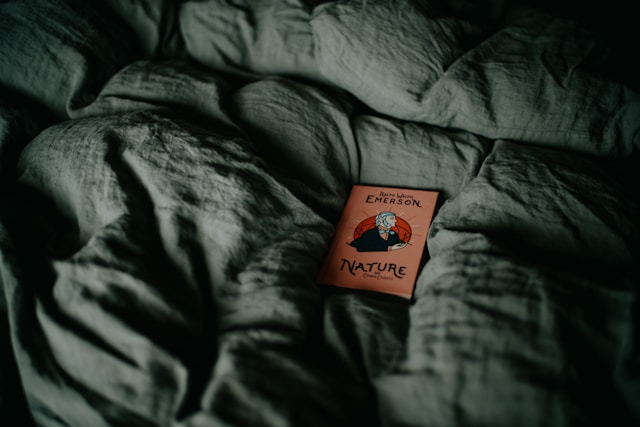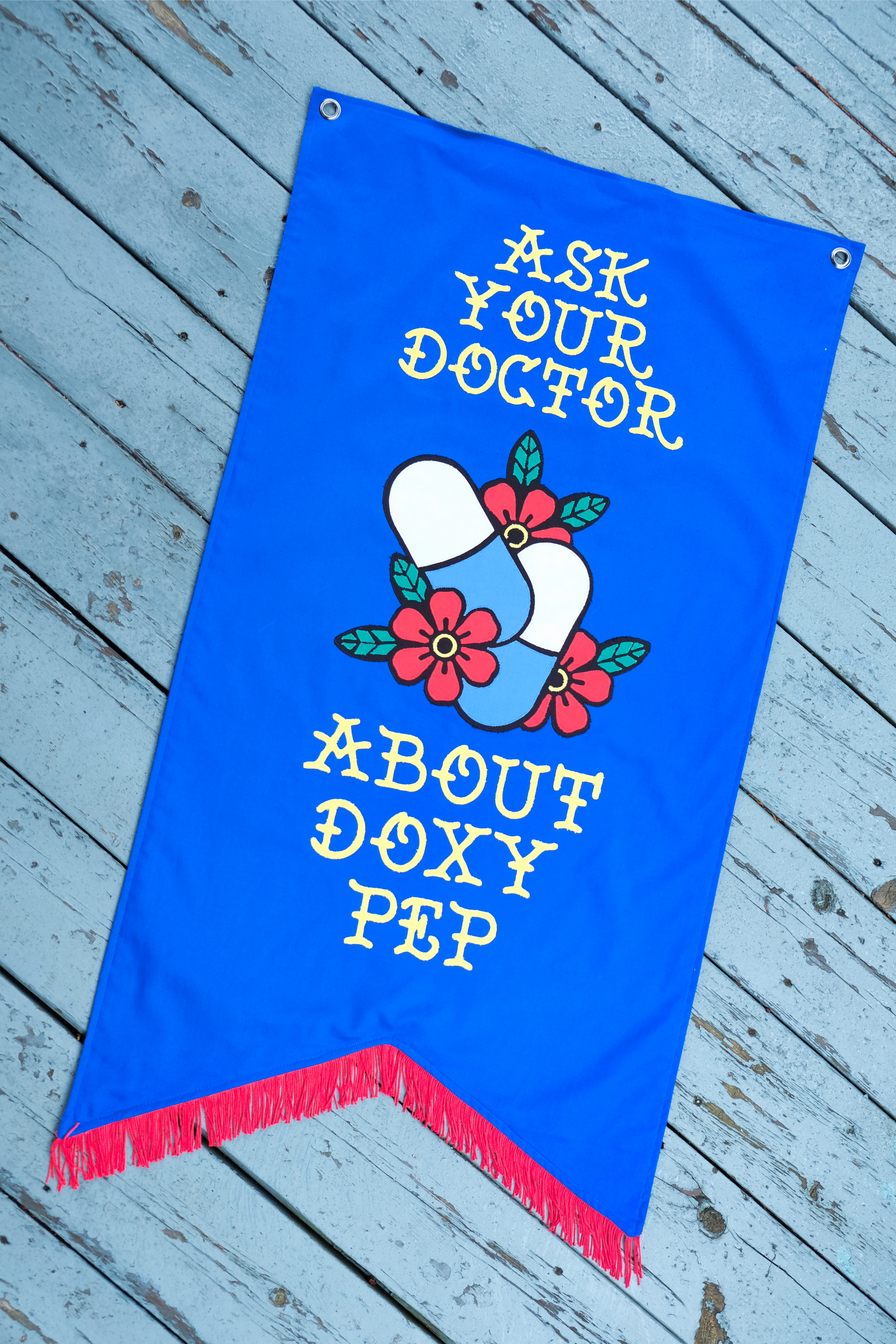How to Photograph Your Quilts Like a Pro (Without Going Broke)

Every quilter knows this frustration: you've spent months creating a masterpiece, but your photos make it look flat, the colors are wrong, and you can't capture those perfect stitches.
Professional photographers charge $200-500 per session, and even then, they might not understand what makes your quilt special.
Before we dive in, let's be clear: modern smartphones take incredible photos, and plenty of quilters create stunning documentation using just their iPhone or Android. If you're happy with your phone photography, keep at it!
But this article is specifically for quilters ready to level up with a DSLR system — whether because you need higher resolution for print sales, want the precise control that interchangeable lenses offer, or you're tired of your phone's computational photography making your hand-stitching look artificially smooth.
The Camera Secret Nobody Tells You
Ok, with that out of the way... First things first: forget everything you've heard about needing the latest new camera.
Your quilts don't run around like toddlers or fly like birds, they stay perfectly still. This means a used 2015 DSLR produces identical results to a 2025 model for textile photography. The technology for photographing stationary subjects was perfected years ago, which creates an incredible opportunity in the used market where professional cameras sell for 40-60% below their original price.
The Nikon D750 has become the quilter's secret weapon, available used for $500-880. This full-frame camera delivers the color accuracy and detail that makes gallery submissions sing and online sales convert. If that's beyond budget, the Canon 6D offers similar quality for $500-700, while the Canon T7i at $300-400 provides an excellent entry point.
The Three Lenses That Transform Your Photography
While everyone obsesses over camera bodies, professional photographers know that lenses make the real difference. You need three focal lengths to document quilts properly, though you can start with one and build over time.
The 35mm lens is your space-saver, perfect when you're trying to photograph a king-size quilt in your sewing room. At $200-400 used, it provides a wider field of view that captures entire quilts from just 3-4 feet away. This focal length also excels at environmental shots—showing your quilt draped over a couch or hanging at a show—giving context that helps viewers understand scale and setting. Look for the Canon EF 35mm f/2 IS USM or Nikon 35mm f/1.8G.
Your workhorse will be a 50mm lens, available for $100-300 used. This versatile focal length handles 80% of your documentation needs, from full quilt shots in larger rooms to detail work when you step closer. The perspective closely matches human vision, making your photos feel natural and inviting. Every manufacturer makes excellent 50mm lenses, so you'll find plenty of affordable options.
The game-changer is a 90-105mm macro lens, which runs $400-600 used. This specialized lens reveals the personality of your quilting: the texture of hand-stitching, the shimmer of metallic thread, the dimensionality of trapunto. When judges zoom in on competition entries or customers want to see your craftsmanship, macro capabilities separate amateur snapshots from professional documentation. The Tamron 90mm f/2.8 macro has become a quilter favorite, offering professional quality at working-artist prices.

Where to Buy Without Getting Burned
The difference between a great deal and an expensive mistake lies in choosing reputable dealers. In the United States, KEH Camera has earned trust with their conservative grading system and 180-day warranty. Their "Bargain" grade cameras might show cosmetic wear but function perfectly—ideal when you're more concerned with image quality than appearance. MPB takes a different approach, showing actual photos of each used item and backing everything with a 6-month warranty. B&H Photo's used department offers the widest selection, though their grading can be optimistic.
Canadian quilters have excellent local options. Henry's operates used departments in their stores nationwide, letting you inspect equipment in person. The Camera Store in Calgary has built a stellar reputation over decades, while Camera Canada serves Montreal based folks with both online and in-store options. Vistek caters to professionals in Toronto, Calgary, and Edmonton with higher-end used equipment.
European quilters should start with MPB's regional operations in the UK, Germany, and France. They maintain the same quality standards as their US counterpart with local shipping and support. WEX Photo Video ships throughout the EU from the UK, while Germany's Fotoimpex specializes in vintage equipment that often includes hidden gems for textile photography. Park Cameras in the UK also offers excellent used equipment with detailed condition reports.
Understanding condition grades saves money without sacrificing quality. "Excellent" or 9/10 items look nearly new but cost 30% less than retail. "Very Good" or 8/10 shows minor wear while saving 40%—this is the sweet spot for most quilters. "Good" or "Bargain" grade saves 50% or more and works perfectly if you don't mind cosmetic imperfections that don't affect image quality.
Settings That Work Most of the Time
Professional quilt photography doesn't require memorizing complex technical charts.
1) Set your camera to Aperture Priority mode (marked A or Av), choose f/8 to f/11 for maximum sharpness, and let the camera handle the rest.
2) Keep ISO between 100-400 for clean images without grain.
These settings work whether you're photographing a mini quilt or a king-size masterpiece.
The secret to consistent color lies in white balance. Shoot in RAW format (your camera's unprocessed file type) and use a gray card—a $15 investment that ensures your blues stay blue and your reds remain true.
Place the card in your first shot, then click on it in editing software to instantly correct colors across your entire session.

Lighting Changes Everything
Here's what transformed my quilt photography: two $75 LED panels from Amazon positioned at 45-degree angles eliminate harsh shadows and reveal texture. You don't need expensive studio strobes. Continuous LED lights let you see exactly what you're capturing, and modern panels offer adjustable color temperature to match any situation. Add a $30 white foam board to bounce light into shadow areas, and you've built a lighting setup that rivals professional studios.
For detail shots, position one light closer to create subtle shadows that emphasize texture. When photographing entire quilts, place lights equidistant to ensure even illumination. Natural light from a north-facing window works beautifully for small pieces, but larger quilts need artificial lighting for consistency.
For those ready to step up from basic LED panels, continuous video lights like the Godox SL60W ($150-180 new, $80-120 used) offer professional-level control at hobbyist prices.
These COB (Chip-on-Board) LED lights provide consistent 5600K daylight-balanced illumination that's perfect for accurate color reproduction in textile photography. Unlike flash photography where you can't see the final result until after shooting, continuous lights let you watch shadows disappear and texture emerge as you adjust positioning. The SL60W's 60-watt output through a softbox or umbrella creates the soft, even light that makes quilting stitches visible without harsh shadows. Mount one on each side of your quilt at 45-degree angles, or use one as your main light with a reflector filling shadows on the opposite side. The biggest advantage for quilters?
These lights stay cool enough to leave on during entire photo sessions without heating up your sewing room, and they work identically for both photography and video if you ever want to film tutorials. Look for used units from video creators upgrading their equipment—the bulbs last 50,000+ hours, so even well-used lights have decades of life remaining.
No Lights? No Problem!
If you're not ready to invest in lighting equipment, nature provides the perfect solution: overcast days create the world's largest softbox. That blanket of clouds acts as a massive diffuser, eliminating harsh shadows while providing even, consistent light that's ideal for quilt photography. Hang your quilt on a fence, clothesline, or against your house's siding—the soft, omnidirectional light wraps around texture and brings out true colors without the color casts that plague indoor photography.
Early morning or late afternoon overcast conditions are particularly magical, offering slightly warmer light that enhances fabric richness. This natural studio stays perfectly color-balanced and never overheats, though you'll need to work quickly as conditions change. Watch for bright patches breaking through clouds that can create unwanted hot spots, and avoid windy days that turn quilts into sails.
Keep a simple outdoor kit ready: clamps for securing quilts, a white sheet to protect backing from rough surfaces, and your camera in a bag by the door. When that perfect gray sky appears, you can document an entire collection in the time it would take to set up studio lights.
Your First Purchase Strategy
Start with a used Nikon D750 or Canon 6D body ($500-700) and a 50mm lens ($150). Add two LED panels and stands ($150 total), a sturdy tripod ($75), and a gray card ($15). This $900 investment immediately replaces professional photography sessions. Within six months, add the macro lens when you find a good deal. The 35mm can wait until you're consistently running out of space for full-quilt shots.
Making It Happen
Visit KEH Camera's website this week to see current inventory and understand pricing. Check whether Camera Canada or Henry's has local stores you can visit. Join the "Quilters Taking Photos" Facebook group where members share equipment deals and technique tips. Most importantly, start photographing with whatever you have now—even phone photos—to practice composition and lighting before your DSLR arrives.
Professional quilt photography isn't about expensive equipment or technical perfection. It's about understanding that your textile art deserves documentation that captures its true beauty, and that achieving this is more accessible than the photography industry wants you to believe. That $900-1,200 investment doesn't just save money—it gives you creative control over how the world sees your work. Your quilts are worth it, and more importantly, you're capable of doing this.
Resources: Learn More About Quilt Photography
Once you have your equipment, these tutorials and resources will teach you the techniques that transform snapshots into portfolio-worthy images:
Essential Technique Guides
Beginner's Guide to Quilt Photography - Bryan House Quilts
Start here for the fundamentals: natural lighting, basic composition, and the shots every quilter needs. Perfect for those just starting their photography journey.
10 Tips for Photographing Quilts - Simple Simon and Company
Practical advice on proportions, staging, and the rule of thirds. Includes the crucial tip about shooting eye-level with your quilt's center to avoid distortion.
6 Quilt Photography Tips from an Expert - Suzy Quilts
Wedding photographer Hannah Kelly shares professional secrets for textile photography, including how to observe light in your home and why to turn off artificial lights.
Best-Kept Secrets: How to Photograph Quilts - Quilting Daily
Covers everything from cleaning your lens to editing on your phone. Excellent for smartphone photographers who aren't ready for a DSLR yet.
Competition and Professional Documentation
My Best Tips for Photographing Quilts - @Zak Foster
Our very own Smart smartphone techniques including shooting quilts flat on the ground during overcast days, using iPhone's zoom-out feature for aerial views, and developing a consistent shot list (flat, folded, squeeze, and drop shots). Plus a bonus on how to get big ones held up! https://www.instagram.com/p/BubpM65Hx-t/
How to Photograph Your Quilt for Competitions - The Festival of Quilts
Official guidelines for competition submissions including required shots (full view, detail, back), file formats, and why vertical hanging matters for judging.
Photographing Your Quilt - Quilts.com
Competition-focused guide emphasizing high resolution settings and proper file naming conventions for jury submissions.
How-to Photograph Quilts - sassafras-lane.com Aewsome guide on how to photograph quilts.
Creative Approaches and Styling
How to Take Photos of Quilts: 10 Photos You Should Take - Quilty Love
A complete shot list ensuring you capture every angle before gifting quilts. Includes creative ideas like ladder displays and folded beauty shots.
How-to Photograph Quilts - Sassafras Lane Designs
Instagram-focused photography tips including prop styling, using recipients in photos, and creating a portable photo kit with lint rollers and clips.
5 Basic Tips on How to Photograph Your Quilts - Missouri Star Quilt Company
Emphasizes finding "open shade" for outdoor shots and removing distractions. Great for beginners overwhelmed by technical advice.
Instagram Inspiration to Follow
Study these accounts for composition and styling ideas:
- @nightquilter (Kitty Wilkin) - great with outdoor quilt photography
- @sharonhollanddesigns - Comprehensive documentation techniques
- @quiltfolk - People-focused quilt photography that tells stories
- @stitchedandfound - Hannah Kelly's vintage quilt photography

